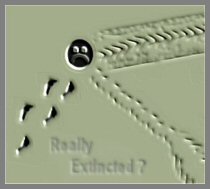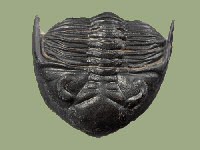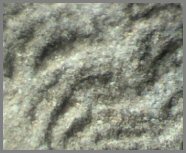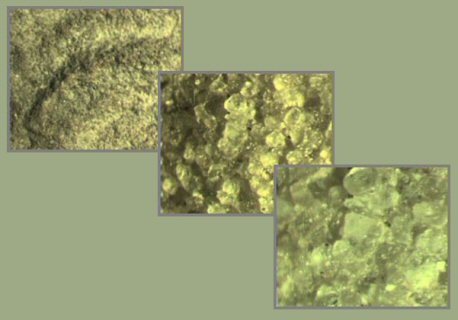|
|
|
Ichnofossils::
Homepage:: TRILOBITA:: Preparation:: Cabinet:: Literature:: Links:: Geological Time:: Special:: Explanations::
The Team :-)
Ichnofossils:: Trilobites:: Behavioural pattern:: Stratigraphy:: Lithification::
|
Stratigraphy and Lithification |
|
Ichnofossils and StratigraphyThe stratigraphic importance of trace fossilsis is relatively small. Cause the life trails are autochtonous, i.e. considered biological they can be classified to a localized biotope, they're of particular importance concerning its ecological analysis. Thus it's possible to to draw conclusions from life trails concerning faunas living conditions e.g. the ocean beds water aeration, water depths or also for determination of layers position regarding "top" and "bottom".et But the transition between Proterozoic and Phanerozoic respectevely the transition from the Ediacarian into the Cambrian is to support stratigraphical using trace fossils. For this period of transition, there's a significant increase of trace fossil's diversity to prove. It is conjecturable, that only now with the beginning of this transition, lots of marine organisms passed over into benthic mode of life. |
|
|
|
Lithification
At the latest now the question comes up for everyone, how it's possible, that such a volatile mark is able to ride out the process of fossilisation. Then unlike to fossil marks of e. g. aroused by a sauropod, what is pushed into the floor by respectable mass and kinetics, our trace fossils were aroused by a multitude of cleft feets and body structures, whose owner was holding a body mass, moved with kinemtatic energies, that were nearly neglibigle, compared to those of the ambient medium water.
The answer lies in the benthic sediments lithification. This lithification generally describes the process of rock- forming. During this process, the loose sediment of the seabed is transformed into solid sedimentary rock at prevailing low temperatures. Due to the grade of conservation of the trace fossils of our invertebrates, it is assumed that there barely was appreciable drift at the benthic floor. The accumulation with filling sediment had to take place without high force action and masses. This extra load finally led to compression (compaction) of the trace leadind sediment so as well as the press out of water. A mineral cement conglomerated, based on dejection of solutions from soil spaces between sediment cranules, that led to cementation of the cranules again. Thus loose trace leading sediment was converted into sedimentary rock.
Considering as example of one of our Diplichnites, the microscopic CCD- photos are demonstrating the basic units (sediment cranules) of this trace fossil:
|
|
Diplichnites |
|
Diplichnites (Greenfilter)
|
|
|
|
Therewith we are finishing this little excursion into the world of trace fossils.
Furthermore have fun quarrying our pages :-))) |
|
|
 Bad Day |
|
|
|
|
|
|
|
|




